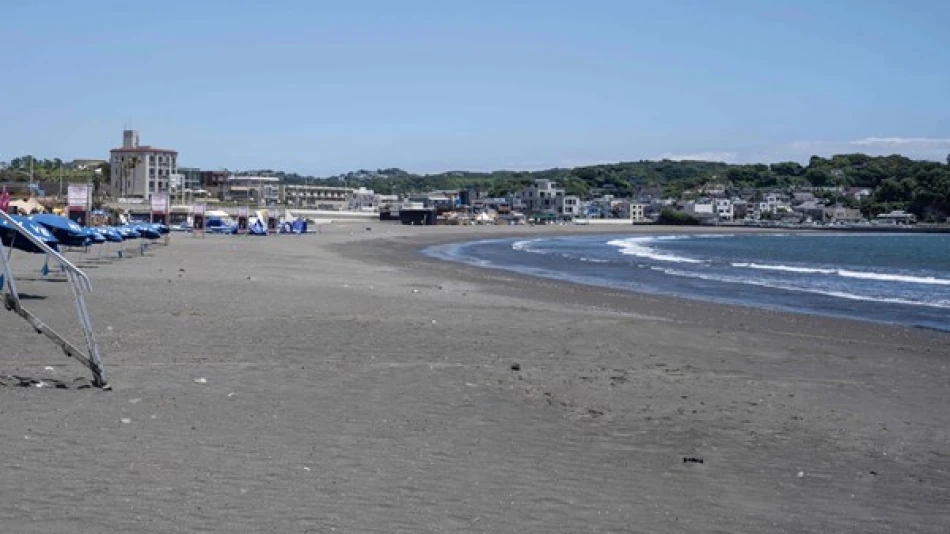
Japan Downgrades Final Tsunami Warning as Threat Recedes
Japan Dodges Major Disaster as 8.8 Magnitude Earthquake Triggers Tsunami Waves Across Pacific Coast
Japan has lifted its most severe tsunami warnings following a powerful 8.8 magnitude earthquake that struck Wednesday, sending tsunami waves crashing into Russia's Kuril Islands and Japan's northern Hokkaido island. While advisory alerts remain active along Japan's Pacific coastline, the country appears to have avoided the catastrophic damage that many feared from one of the strongest earthquakes recorded in the region this decade.
Immediate Impact and Response
The earthquake, measured by the U.S. Geological Survey at 8.8 on the Richter scale, generated tsunami waves that reached coastal areas across the northern Pacific. Japan's meteorological agency initially issued its highest-level tsunami warnings for northern prefectures before downgrading them as wave heights proved less destructive than initially projected.
The waves struck both Russian territory in the Kuril Islands and Japan's Hokkaido, the country's northernmost main island. While the full extent of damage is still being assessed, early reports suggest the impact was significantly less severe than the devastating 2011 tsunami that killed nearly 20,000 people.
A Test of Japan's Enhanced Warning Systems
This earthquake represents a crucial test of Japan's upgraded tsunami detection and warning infrastructure, developed after the 2011 Tohoku disaster exposed critical gaps in the country's preparedness. The rapid deployment and subsequent downgrading of warnings demonstrates how the system now balances caution with accuracy.
Japan's ability to issue precise, localized warnings rather than blanket alerts across its entire Pacific coast marks a significant improvement in disaster management. This targeted approach helps minimize unnecessary evacuations while ensuring high-risk areas receive appropriate warnings.
Regional Implications for Pacific Rim Nations
The earthquake's location and magnitude inevitably raised concerns across the Pacific Ring of Fire, where seismic activity affects multiple nations. Countries including the United States, Canada, and various Pacific island nations likely monitored wave propagation models to assess potential threats to their own coastlines.
For Russia, the impact on the sparsely populated Kuril Islands serves as a reminder of the region's vulnerability to natural disasters, particularly given the ongoing territorial disputes with Japan over these very islands.
Economic and Infrastructure Resilience
Japan's response to this earthquake will likely be scrutinized by international observers as a measure of the country's disaster resilience investments. The nation has spent billions of dollars on earthquake-resistant infrastructure, early warning systems, and emergency preparedness since 2011.
The relatively controlled response and minimal disruption, if confirmed, would validate Japan's position as a global leader in disaster preparedness technology. This expertise has become an important export industry, with Japanese companies providing seismic monitoring and tsunami warning systems to vulnerable nations worldwide.
As Japan maintains its advisory alerts along the Pacific coast, the incident underscores both the persistent seismic threats facing the region and the critical importance of advanced warning systems in protecting lives and infrastructure from nature's most powerful forces.
Most Viewed News

 Layla Al Mansoori
Layla Al Mansoori






